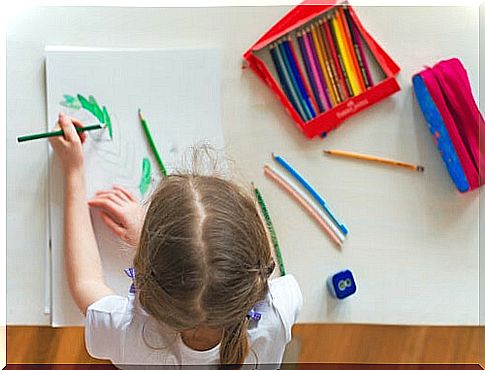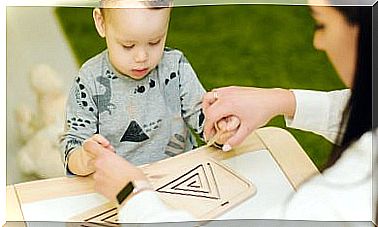5 Tricks To Prevent Children From Scratching The Walls
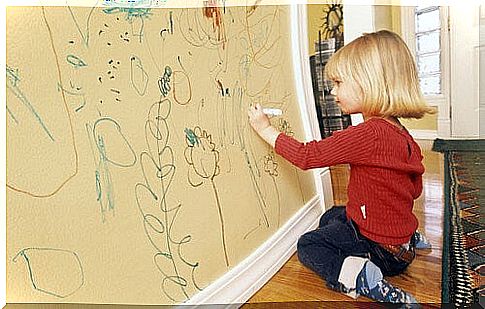
To prevent children from scratching the walls there are no standard rules. It’s all about being creative and having common sense. If we focus on finding solutions, instead of berating children for their spontaneity, we will make them understand us better. In this way, we will avoid looking like real villains who only seek to restrict their interests.
A normal phase of growth: tricks to prevent children from scratching the walls
All children, around the age of two, begin that artistic phase characterized by scratching the walls. During this stage, the walls become the ideal canvas because they allow you to easily achieve an angle at which to rest your hand and the tip of the crayon, or marker.
Of course, we are all touched by these types of actions of our young son, especially when he seems to be trying like a rough artist. However, it is not pleasant to regularly repaint the walls of our home due to our son’s artistic hyperactivity.
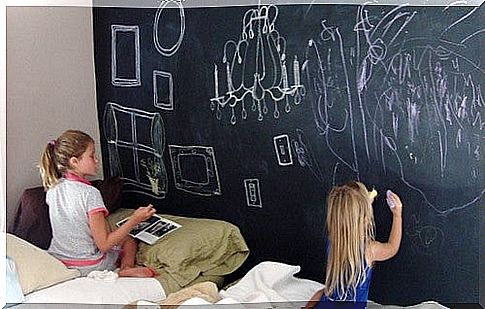
1. Blackboard effect wall films
Both in school supply stores and online shopping portals, you can find wall sheets in different sizes. It is a smooth surface that allows to obtain a fully functional blackboard effect . For the use of this type of article, colored chalks are very good.
In terms of their location, the ideal is that they are in the child’s room but it is best to locate them in the place that usually attracts their artistic attention, so that they do not remain as an ornament in the room.
2. Chalk board to prevent children from scratching the walls
Generally, the chalk board is the most used in these cases. However, if the child is allergic or suffers from asthma, it is preferable to avoid this type of tool, since the dust from the chalk can increase the discomfort. On the other hand, the chalk board has the facility that it can be constantly reused without any conflict.
If the child is between 3 and 4 years old, he will be able to better appreciate the fact that the blackboard is a free area to make his designs. At this age, your communication skills allow you to understand that the board will conform to what you want to draw.
3. Easy-to-clean paint or crayons
There are wall paints on the market that have a non- stick coating that allows you to clean any trace of color or marker as if it were a dust spot on the table, that is, they are non-stick to other types of paint.
In the same sense, but more practical, you can also find special colors whose lines can be easily removed with a dry or semi-damp cloth. This does not exactly prevent children from scratching the walls, but it does remove the problem of having to deal with repainting the walls.
4. Creativity and responsibility to prevent children from scratching the walls
Even if the child already has an established area of tracing, whether on a blackboard or picture, some children have incredible impetus to make any plain-colored surface their own canvas.
A good way to prevent young children from scratching the walls when they want to span beyond their designated space on a blackboard is to incorporate them into the cleanup of their creations. In this sense, it is very important to normalize responsibilities and incorporate them naturally, without punishment or demands, into their behavior.
The idea behind the child helping to clean the lines that he made is more of an educational and didactic activity than a punishment, since it makes the child aware of the effects of his actions. It also allows the child to learn more about nature and the importance of being responsible.
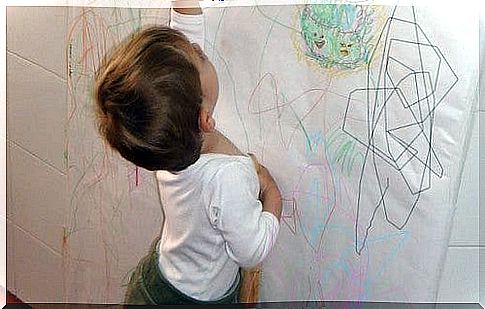
5. Large size paper or cardstock
There are blackboard effect sheets that are practical because they can be left on the wall for a long time, like any blackboard. However, if you want to test this option or it is simply not an option for you to buy a sheet like the one described in tip 1, due to the style of texture or wallpaper your wall, you can use large sheets of paper or large size cardboard.
These cards are glued to the wall with a little transparent tape, and thus, the child will not be tempted to scratch other surfaces. In this sense, the cards will serve to prevent children from scratching the walls. And give your artistic inspiration a suitable support.
The only disadvantage of large-size cardboard or paper is the fact that it must be changed on a regular basis. Since it is not easy to reuse once the child has painted on both sides. However, some mothers have tried a special technique to reuse these papers, thus generating as little waste as possible.
Once the child has drawn (in pencil, color or marker) on both sides of the paper, it is suggested that they print their handprints on these papers, with colored templates. In this way, the role is used once again and, at the same time, children are given a variant, with which they can vent their artistic impetus.
Additional tips to prevent children from scratching the walls
You can’t miss these extra tips:
- As we already mentioned, children scratch on the walls not only because it is entertaining, but because it is more comfortable for their hand to make the lines standing up and on a smooth vertical surface. Over time, your child’s motor skills will develop. It is important that you get him a sketch pad so that he can explore this format and adapt to a space other than the wall.
- Colored chalks and crayons are the best option for your child to draw. Avoid buying markers or paints, because remember that the walls are not the only thing that can be painted, but also the home furniture, with which, the chalks or crayons become less dangerous and easier to remove if necessary.
From now on and taking all these tips into account, your children will be less likely to be able to paint the walls. They will not feel that need as you will be helping them to satisfy their creative urge in another effective way!
